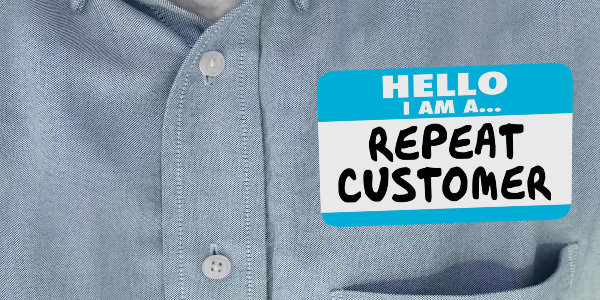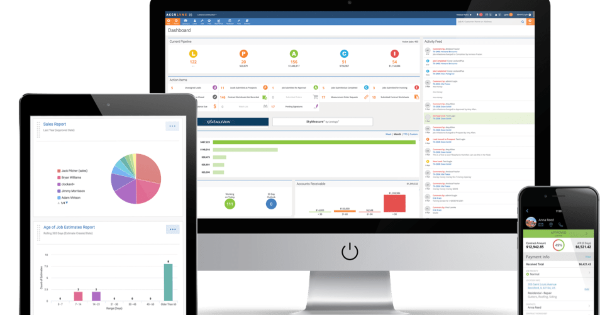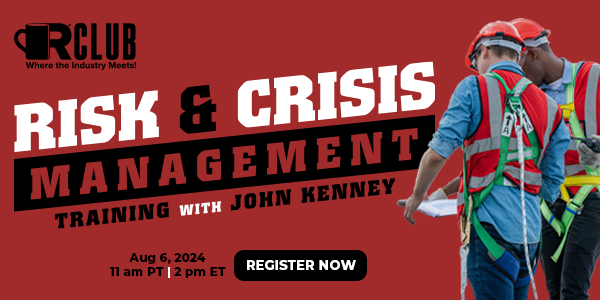20 Ways to Increase Customer Retention

By Ingage.
The best customer is the one that comes back again and again, so how do you turn new customers into returning ones?
What makes a customer want to come back to your business above all others? What drives a homeowner to give a referral to a friend? You know that the ability to retain customers can be make or break for your business, yet customer retention tends to be lower on the list of priorities. Your returning customers are some of the most powerful assets of your company — having customers return and remain loyal is a huge part of growing your business and increasing your bottom line. Learn excellent customer retention strategies from Ingage and figure out how to turn new customers into returning customers!
What is customer retention?
Customer retention is the process of establishing lasting relationships with clients. Many stores devote a large chunk of their marketing budget to attract customers to their sites. Having a few customers that return regularly eases the pressure to keep targeting new customers.
Why? Well, in eCommerce, the ratio between the top customers and their percentage of total sales is incredibly tight. A whopping 41% of an online store’s sales come from 8% of its customers. So it’s important to make every outreach effort count. In contrast to low success rates in converting new customers, according to Paul W. Farris’ book Marketing Metrics: The Definitive Guide to Measuring Marketing Performance, stores have between a 60-70% chance of re-converting a previous customer. And the more they buy, the more loyal they usually become.
What’s your current customer retention rate?
Before employing any new customer retention strategies, take time to evaluate your present capabilities. Starting with a measurable benchmark helps determine if your program is successful or not. Thankfully, measuring the customer retention rate involves a fairly simple equation:
[(T-A)/S)] x 100
T is the total number of customers after a program ends. A is the number of customers acquired during the period. Meanwhile, S is the number of customers at the start of the program. For example, you have 1,000 customers at the beginning of a promotion. The promo is a wild success, and you add another 800 customers — but also lose 200 along the way. You end the period with 1,600 customers overall.
So [(1,600 - 800) / 1,000] x 100 equal an 80% retention rate.
Now, an 80% retention rate is uncommonly high and unlikely; most businesses strive for 20%, consistent with the Pareto principle. Your numbers will vary by business flow, time of year, industry and so on. What’s important is that you keep striving to raise your percentage whenever possible.
Why is customer retention important?
Retaining customers is the most cost-effective way to turn a profit. Persuading new customers to try a new product entails a slew of promotional strategies that can rack up substantial costs; in contrast, getting an established customer to check out new products often just requires a gentle nudge. Between spending more on prospects and spending less on established customers, it’s a no-brainer.
Getting new customers onboard requires them to hurdle that first order. This is the hard part for both buyers and sellers. Many new customers abandon their online carts when shopping from a site for the first time, for reasons as small and diverse as surprise shipping fees or a lack of preferred payment options. In addition, new customers are also more wary of sharing personal data, especially billing information. Once a store earns the trust of a customer regarding these issues, the next order is all the easier.
From payment and order processing to shipping and delivery, a hassle-free transaction can go a long way to winning consumer buy-in. And once the buyer trusts your business, they become more likely to both order again (given their positive ordering experience) and recommend your business to others.
Customer retention strategies to implement today
Keeping existing customers happy ultimately leads to better business results, as your most loyal customers will end up contributing a majority of your revenue. Getting customers to keep patronizing your business may be easier than getting new customers to sign up. However, it doesn’t mean doing so is a cinch. Companies still need to remain on the lookout for potential problems that can cause customers to leave. After all, just a single bad experience can cause a customer to leave for good.
Check out these 20 customer retention strategies that can help increase customer loyalty and retention to your company:
1 - Provide premium customer service
At the top of the list of proven customer retention strategies is keeping your customer service operations top-notch. Avoid thinking of customer service exclusively as a way to deal with complaints. Sure, dealing with concerns is a major part of what CS addresses regularly; however, customer service also provides the company with multiple opportunities to improve the company’s reputation.
By providing customers and prospects with timely and informative answers to even the simplest questions, you’ll cultivate customers who have a deeper appreciation of your business. At the same time, prospective clients will get a taste of your excellent service. This positive experience might just be the thing that nudges prospects into finally pushing through with the sale.
2 - Streamline your onboarding process
If you want to retain customers, you have to make sure they’re set up for success even after they buy. A solid onboarding process helps acquaint new users with how to use your product or service to their benefit and can make or break your retention rate. A customer’s decision to continue with you often depends on how easy or complex the onboarding process is.
Onboarding starts right when customers show their intention to sign up for a product or service. This might involve a prospective user trying out a product demo or subscribing to a trial offer. Successful, hassle-free account creation and registration often lead to a commitment to a full purchase. Similarly, first-time users will appreciate a helpful onboarding process that teaches basic operations and functions.
Conversely, requiring users to provide boatloads of information just to register a trial account can create the opposite effect. For example, asking for credit card information during the trial stage can often annoy a customer that hasn’t committed to a purchase. Wait until after the customer expresses satisfaction with the trial and wants to buy the full version. Additionally, a lack of helpful information and a barrage of repetitive notifications to upgrade can turn off even the most patient user.
3 - Create a loyalty program
Loyalty programs make customers feel special. Not only do they feel positive about their purchases, but they also receive material rewards for doing so. However, it’s important to create loyalty programs that add actual value to a customer’s participation.
When developing a loyalty program, it’s important to make sure it fits the market’s profile and tastes. The rewards themselves should cater to customers’ values. Remember, issuing cheap or easily-obtainable items in exchange for hard-earned points is a gimmick that’s best left to carnival operators.
Instead, throw in limited-edition merchandise that suggests exclusivity. Additionally, consider providing instant rewards like bonus points upon signup to encourage participation. Allowing a mix of rewards points and cash to redeem higher value items can make a rewards program more enticing.
4 - Offer referral rewards
Referral programs are distinct from loyalty programs, as they focus primarily on recognizing a customer’s efforts in recommending the brand. Loyal customers are often more than willing to share their positive experiences with their friends and family, and as a result, incoming leads will consist of people receiving firsthand endorsements of the brand. This makes them more open to joining.
At the same time, referral programs motivate the existing customer base to act as brand ambassadors in exchange for tangible rewards. If customers already promote the brand of their own free will, what more will they do if offered a reward? A program featuring exclusive items, special promotions and discounts or even VIP status not only increases their loyalty but can also lead to more purchases from these appreciative members.
Referral programs are also self-sustaining and often work to scale. Additional revenue generated from new users can help fund and even improve the program.
5 - Build trust through customer relationships
Trust is the foundation of a loyal customer base. After all, people need to feel secure in supporting your brand if they’re to keep coming back! But it’s more than just knowing that the product works; they also need to know that your brand cares. The best way to deliver on this? Through robust, relationship-oriented customer service.
Put the customer first, and let them know they will always remain your top priority. If they feel valued and heard, your customers will gladly stay with you through thick and thin.
6 - Ask for feedback
Asking customers to leave a review or comment about their experiences with the brand is another great way to generate loyalty. By requesting feedback, you show your willingness to listen and learn from customers. Many companies declare that they see customers as partners in their business. Listening to and applying feedback is a way to put your money where your mouth is, as they say.
Actively asking for feedback instead of waiting for it adds another proactive element to this. Without an effective reporting mechanism, companies often learn about a problem via social media complaints or bad reviews. At this point, it’s usually far too late to handle the issue delicately. An open communication system allows customers to share their concerns with the company and allows enough room for resolution.
It’s not just that customers are more loyal when companies have a great feedback mechanism. Companies also tend to lose customers that don’t have a system for listening to their users. This can be quite a costly problem. According to Qualtrics, only less than half of customers are willing to forgive a company with a “poor” or “very poor” customer service rating.
7 - Measure your average Customer Lifetime Value (CLV)
Customer lifetime value (CLV) measures the projected revenue a business can earn from a customer over time. In order to determine an individual customer’s CLV, simply add their historical purchases.
While on paper it may seem like simply quantifying how much a customer spends, there’s more to glean from this data. CLV is also a great metric to determine customer satisfaction and loyalty. Increasing CLV helps companies sustain a long-term strategy that focuses on a better return on investment. A CLV orientation helps companies optimize customer retention strategies in order to generate more repeat orders. Not only are repeat customers likely to buy more, but they also tend to spend more per purchase.
In addition, focusing on CLV allows businesses to identify and acquire more target customers. Knowing that your target market is willing to spend $100 instead of $10 over the course of time might prompt you to realign your acquisition strategy. Instead of spending on blind ads, enterprising firms can develop better customer retention strategies such as rewards or referral programs.
8 - Work to increase your Average Order Value
Measuring your customers’ average order value (AOV) is also key in further understanding customer behavior. Basically, AOV is the average purchase amount customers spend every time they complete an online order.
Understanding your company’s AOV and taking into account which products drive frequent purchases can help you develop sounder customer retention strategies, increasing the lifetime value of your customers. In order to determine a customer’s AOV, simply divide the total lifetime purchase value by the number of orders made.
How do you increase order value? Some common strategies include setting a minimum order amount for free shipping or offering discounts when customers purchase product bundles. Upselling or cross-selling promotions also entice spot purchases, especially when offered under time-sensitive promotions.
9 - Leverage the use of a company newsletter
After amassing enough loyal customers to establish a formidable base, it would be a shame to lose them due to a lack of information. Reach out to your customers periodically by sending an e-mail newsletter containing a rundown of your company’s programs for the upcoming weeks.
Your newsletter should focus on the various promotional activities for the period, as well as features of new products. Inserting newsletter-only special deals or coupons can also help ensure customers read thoroughly. Try to add in some informational sections like consumer articles, product reviews, company news and tips as well. In keeping with your strategy to implement great customer service, publishing selected customer feedback can also help increase engagement.
10 - Make social proof work for you
Another popular method of encouraging sales loyalty is offering social proof of certain products. Social proof consists of user-generated content (UGC), like customer reviews or organic social media content. Many customers base their purchase decisions on the presence — or absence — of this UGC. Featuring social proof prominently on your company’s home or banner page can spark interest from customers who are on the fence.
Social proof owes its popularity to its authenticity. People relate more easily to other normal people using products and services, rather than a slick staged promo. In essence, social proof is evidence that similar people use and enjoy a product. This validates customers’ desire to own the same products.
When promoting social proof reviews, don’t make the mistake of selecting just the positive. Including one or two less-than-stellar reviews adds authenticity and transparency. It shows that your company values feedback — whether positive or negative. It also shows that your company is honest enough to include neutral or negative reviews. This balance can go a long way in boosting trust and credibility for your company.
11 - Don’t take brand community for granted
A strong brand can increase engagement by cultivating a social user community. Not only will this strengthen the brand’s relationship with its users, but it also allows customers to connect with each other. Establishing a community forum creates an information exchange hub where members can learn from others’ experiences or share their own stories to help each other.
Over time, some customers will develop enough confidence and amass enough knowledge to consider themselves community experts. They can assume leadership positions within the community to assist new members, disseminate information to other members and help organize community activities. In many cases, power users can emerge as the foremost brand champions or brand ambassadors.
At the same time, community members will appreciate the brand’s active support and see it as a long-term commitment to its faithful user base. The brand can use the community forum to conduct surveys and provide additional tools and services to help users and support initiatives. Executed correctly, a community forum helps the brand by being the frontline resource for common questions, issues and troubleshooting tips. This can help reduce the burden of customer service, so they can focus on addressing more complex issues.
12 - Surprise clients
Just like in any other relationship, brands can spice things up with their loyal customers through random surprise acts. Surprising customers with an unexpected reward can be an instant game-changer. For the price of a small promotional activity, the brand can brighten a number of people’s days. This could then turn those one-time customers into loyal supporters for the brand’s lifetime, as thanks for treating them as more than just a number. Not only will customers likely boost their purchases, but they’ll also gladly share their experience with their friends. Even better, they’ll also likely post a positive story on social media.
A simple birthday greeting by email or social post has the potential to perk up a customer’s day. If the brand throws in an exclusive offer or promotion along with the greeting, it can turn a user into a lifelong fan. Replying to feedback or a comment, especially a negative one, is also an opportunity to surprise passionate users who cared enough to leave a message. Offering some sort of kind gesture such as an exclusive coupon or a free item can also help erase the negative sentiment. Featuring a customer in the company newsletter is yet another great example of how to surprise clients by highlighting their contributions.
13 - Personalize each customer’s experience
It’s hard for a customer to feel connected to your brand if you don’t make an effort to reach out. Companies miss out on a great opportunity for personalization if they ignore the wealth of information voluntarily submitted to them by their customers. User accounts contain enough data for brands to tailor a personal message for users every time.
Companies can use this voluntarily shared data to communicate with customers on a personal level. Personalizing communications can substantially increase engagement rates; in fact, Experian found that just adding a customer’s name in the subject line is enough to raise the email open rate by 26%! When users log in to the brand’s online store, a simple acknowledgment containing the user’s first name helps them feel noticed.
Personalization might also involve using customer data to make recommendations or refer to previous interactions. Customers might also appreciate it if you incorporate previous purchases and wishlist items when posting personalized recommendations.
14 - Leverage online tools
Custom presentations are another excellent example of the way personalization strategies can boost customer retention. Customers see themselves as individuals, with unique needs that require unique solutions. Sending them a generic multipurpose slideshow will give them the impression of a lack of interest in their problem. Thankfully creating a personalized interactive presentation is easy with online tools like Ingage.
Incorporating the client’s peculiarities and expectations into a presentation shows that your solutions will be similarly tailored to their needs. Built-in analytics tools can help track and analyze which parts of the presentation catch the audience’s attention the most, so you can further refine your delivery to best meet clients where they are.
15 - Deliver omnichannel support
Not all customers have access to the same communication channels. A very busy customer doesn’t have the time to answer phone calls or deep dive into lengthy emails. Some prefer the more rapid speed of text messaging, while others would rather interact via social media. Forcing all your customers to a single channel, instead of offering options that suit their needs, only reduces the pool of prospects. Consolidating messaging into a single channel might be convenient for you — but your clients will definitely beg to differ.
An omnichannel approach, meanwhile, allows customers to access your services in the manner that suits them! Using tools to consolidate channels also streamlines access for both your support staff and clients. Clients can use and switch between channels without having to repeat credential verification over and over. Instead, you can devote that valuable time to solving problems.
16 - Invest in employee training
Any list of strategies has to mention employee customer retention training! This helps sales teams focus on providing customers with the solutions they need and learn to spot the warning signs of customer disengagement. After all, the wrong product suggestion or unsatisfactory customer service can push a customer off the edge and into the arms of a competitor.
Whether your team is lagging or could just use a regular refresher, customer retention training can help them stay at the top of their game. It can also prompt them to proactively develop their own ideas about how to keep customers happy. This training helps teams reduce dependence on customer acquisition to increase revenue, as they’ll be better at sustaining relationships with existing customers.
17 - Create educational content
One recurring piece of feedback from modern shoppers — particularly Millennial and Gen Z shoppers — is that they value educational content when it comes to advertising. Take their hint and beef up your educational offerings to both give them what they want and train them to be efficient users of your product or service. Members will surely appreciate the added knowledge; if you have a strong user community culture, this also encourages community members to refer to shared information before calling on customer service or IT support for assistance.
Brands can implement content education in a number of ways. Apart from sharing information via a knowledge base and community forums, you might also release informative articles on a regular basis. These articles help provide timely information on updates, new features, tips and tricks about products and services.
18 - Be on lookout as trends change
Generally keeping your pulse on the latest trends helps you shape your strategies to consistently improve customer retention. After all, consumer preferences are constantly in flux. Keeping up with the latest shifts shows that your brand can stay relevant amid changes in the marketplace.
For example, value selling is the name of the game these days, according to B2B sales experts. The flashy gimmicks of yesteryear are out; instead, offer pragmatic shoppers something that’s actually useful. Similarly, as mentioned earlier, UGC is in vogue now as the best way to build rapport with potential customers. Tap into those social media networks and the wealth of user-created material they offer.
In the same vein, we’ve highlighted that personalization is “in”, but so are data-driven analysis and AI. Using tools with robust data to guide your strategies is a surefire way to succeed in the modern era of sales. Incorporate these sales trends into your approach to keep ahead of the pack in today’s competitive market.
19 - Study your churn analytics
Churn occurs when your customers stop buying or leave you for another seller. Some amount of churn is inevitable, but knowing your churn rate helps you foresee the effect it has on your bottom line. Analyzing your rate over time can help pinpoint where in the sales funnel experiences the most churn — and where you can best apply relevant customer retention strategies.
While the information gathered from customer surveys remains crucial in mapping out future strategies, not all customers are willing to share their feedback so plainly. Sometimes the best insights come from more indirect metrics. Instead of relying entirely on feedback forms, brands can use the data they already have in their possession. Transaction histories, customer service history, resolution rates, rewards program participation and community engagement are all great places to turn to in order to get a window into customers’ heads. Running this information through analytics can give you a better picture of what needs to be done to keep your customers happy.
20 - Overdeliver whenever you can
A popular sales maxim is to always underpromise and overdeliver in order to manage customer expectations. However, while the basic idea makes sense on the surface, consider what’s implicit in underpromising: you’ve just admitted to limitations as a brand. Even if (or when) you overdeliver, you’ve set a standard in the customer’s mind for what to expect—and if someone promises better from the start, they may jump ship.
Instead, promise what you know is achievable within the given schedule and overdeliver when circumstances permit it. For example, say that product shipments to the warehouse arrive earlier than expected or new pricing schemes now allow for certain discounts. Surprising loyal customers with these positive updates can definitely create a big impact, without underselling your business to make it happen.
Keep customers coming back for more
Customer retention is just as key to running a sustainable business as pulling in new shoppers — perhaps even more so. After all, the pool of new customers is only so large. Not to mention that it takes more resources to pull in new customers than it does to maintain existing ones. In the long term, taking care of existing customers is the key to stabilizing and scaling your brand. The repeated cash flow is what keeps your business consistent.
But while it’s financially more efficient to retain customers than to sign new ones, it doesn’t mean it’s easier. A single bad customer experience can turn off even the most loyal shopper. And if you can’t take care of your customers, somebody else will be glad to do it instead. Thankfully, these customer retention strategies can help you strengthen brand relationships and increase loyalty — and solve poor experiences when they do arise.
Level up your presentations with Ingage
In addition to these strategies, you also need the tools to match your service. In an age of hyper-personalized service, you need presentation software that can deliver and meet the moment. Traditional static PowerPoints just don’t cut it anymore in today’s environment!
Thankfully, Ingage is here to save the day. Ingage is a cloud-based presentation tool made with the demands of the fast-paced world of sales in mind. With dynamic animations and tools that allow you to customize every aspect of a presentation (even its linearity) for your clients. Since it’s a cloud interface, you can share and collaborate on presentations in real-time. And a robust analytics tool gives you a deep dive into presentation reception — so you know what works and what doesn’t every time.
Learn more about Ingage in their RoofersCoffeeShop® Directory or www.ingage.io.
Original article source: Ingage























Comments
Leave a Reply
Have an account? Login to leave a comment!
Sign In